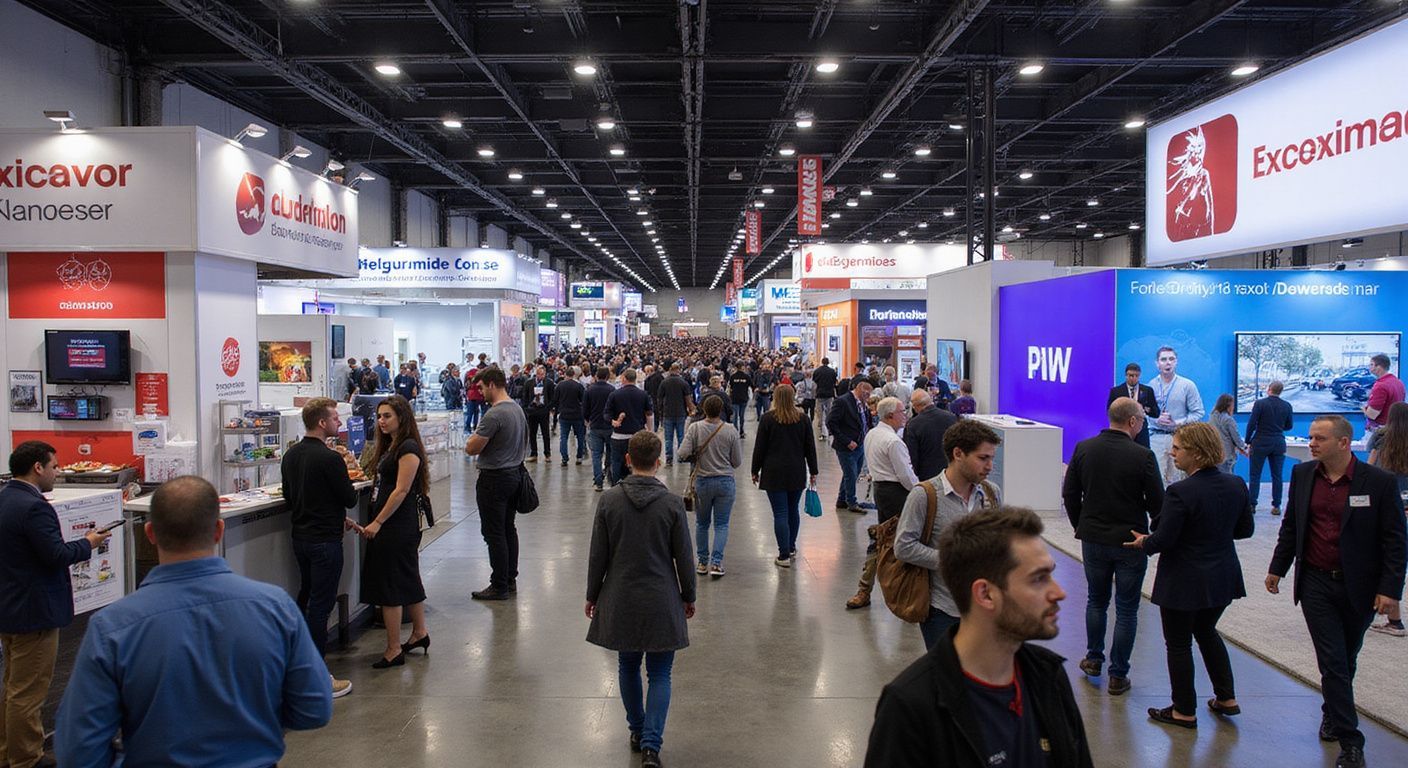Tips for First timers exhibiting at trade shows
Planning is crucial to your success.

Your First Trade Show: A Complete Guide for First-Time Exhibitors
Attending a trade show as a company for the first time is both exciting and daunting. It’s a unique opportunity to put your brand in front of potential customers, partners, and competitors — all under one roof. But without careful planning, the experience can quickly become overwhelming and expensive. Whether you’re launching a new product, expanding your network, or simply building brand awareness, success at your first trade show depends on three key areas: logistics, marketing, and cost.
1. Logistics: Planning Every Detail Matters
Trade shows are complex events with many moving parts, so start planning months in advance. Logistics covers everything from securing your booth space to getting your team and materials on-site.
- Booth Selection & Design: Choose a booth size and location that aligns with your goals and budget. Corner booths often get more foot traffic but cost more. Invest in a design that reflects your brand identity and draws people in from a distance.
- Shipping & Setup: Factor in shipping time and costs for booth materials, signage, and products. Plan for setup and teardown schedules — often there are strict windows and union rules at convention centers.
- Travel & Accommodations: Book hotels and flights early, especially if the show is in a major city. Make sure your team arrives a day early to walk the floor and familiarize themselves with the venue.
- Staffing & Training: Choose a team that knows your products and can engage confidently with attendees. Rehearse elevator pitches, demos, and lead-capture procedures before the show.
2. Marketing: Make Noise Before, During, and After
A trade show isn’t just about showing up — it’s about standing out. Marketing ensures that your presence is known and remembered.
- Pre-Show Buzz: Start promoting your appearance weeks ahead. Announce it on social media, email your customers and leads, and consider scheduling meetings in advance. Many shows offer exhibitor directories — make sure your listing is polished.
- Booth Experience: Think beyond banners. Use video, live demos, samples, or interactive displays to pull people in. Branded giveaways (when done well) can also help your name stick.
- Engagement & Lead Capture: Have a clear plan for how you’ll capture and follow up on leads. Use digital tools like badge scanners or apps to collect contact info quickly and accurately.
- Post-Show Follow-Up: The show doesn’t end when the lights go out. Send follow-up emails within 48 hours while conversations are still fresh. Share highlights on your social channels to keep the momentum going.
3. Cost: Budgeting Wisely for Maximum ROI
Trade shows can be expensive — but they’re also one of the most effective ways to build visibility and relationships. Create a clear budget and stick to it.
- Booth & Space Fees: These often represent the biggest single expense. Costs vary widely depending on booth size and event prominence.
- Design & Production: Include expenses for booth construction, signage, displays, and printed materials.
- Travel & Accommodation: Factor in flights, hotels, meals, and local transportation for your team.
- Marketing & Promotion: Budget for pre-show ads, giveaways, digital campaigns, and any sponsorship opportunities.
- Unexpected Costs: Always leave a 10–15% buffer for last-minute needs — rush shipping, additional power outlets, or on-site services can add up quickly.
A well-planned trade show budget balances visibility with financial responsibility. Don’t overspend on flashy extras if they don’t serve your goals.
Final Thoughts: Preparation Is Everything
For first-time exhibitors, a trade show is a learning experience as much as it is a marketing opportunity. By focusing on logistics, marketing, and cost management, you’ll set yourself up for success — and avoid common rookie mistakes.
Most importantly, remember that trade shows are about people. Genuine conversations and meaningful connections often deliver more value than the biggest booth on the floor.
With the right planning and strategy, your first trade show won’t just be an event — it’ll be a launchpad for your next stage of growth.
